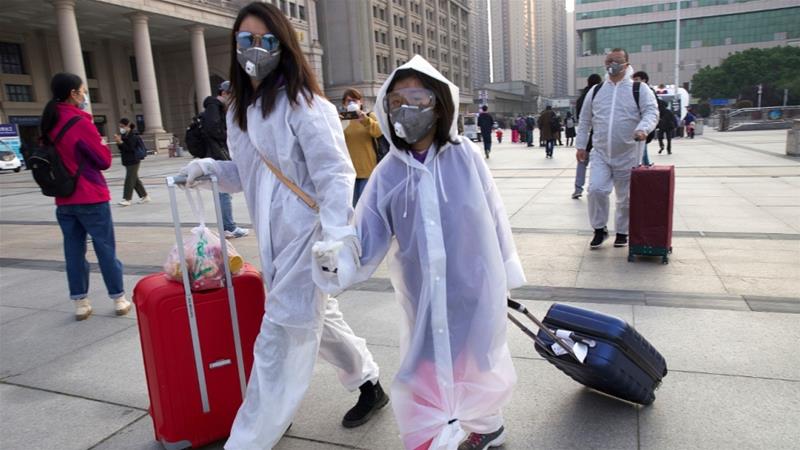
China on Wednesday ended its lockdown of Wuhan, the city where the coronavirus first emerged and a potent symbol in a pandemic that has killed tens of thousands of people, shaken the global economy and thrown daily life into upheaval across the planet.
But the city that has reopened after more than 10 weeks is a profoundly damaged one, a place whose recovery will be watched worldwide for lessons on how populations move past pain and calamity of such staggering magnitude.
In Wuhan, sickness and death have touched hundreds of thousands of lives, imprinting them with trauma that could linger for decades. Businesses, even those that have reopened, face a wrenching road ahead, with sluggishness likely to persist. Neighborhood authorities continue to regulate people’s comings and goings, with no return to normalcy in sight.
Chinese authorities sealed off Wuhan, an industrial hub of 11 million people, in late January, in a frantic attempt to limit the outbreak’s spread. At the time, many outsiders saw it as an extreme step, one that could be tried only in an authoritarian system like China’s. But as the epidemic has worsened, governments around the world have enacted a variety of stringent restrictions on their citizens’ movements.
Some 1.4 million infections and 80,000 deaths have been reported worldwide — figures that are rising fast and that officials say vastly understate the true extent of the pandemic. The contagion has slowed in hard-hit countries like Italy and Spain, but it continues to spread quickly elsewhere around the globe, including in the United States, which is approaching 400,000 known infections.
News reports are filled with scenes of overflowing hospitals in New York City, uncollected bodies on streets in Ecuador, updates on the condition of Prime Minister Boris Johnson of Britain, who is hospitalized in intensive care, and expert warnings that the epidemic could be exploding, undetected, in the poorest parts of the world.
Most of Europe, India, much of the United States and many other places are under orders for businesses to close and most people to stay at home, abruptly crippling economies and throwing millions of people out of work.
The full measure of the sacrifice that such policies entail — in jobs and income lost, in lives disrupted — might first be taken in Wuhan.
Wednesday’s reopening came after only three new coronavirus cases were reported in the city in the previous three weeks and a day after China reported no new deaths for the first time since January. Controls on outbound travel were officially lifted just after midnight in China.
People can now leave after presenting to authorities a government-sanctioned phone app that indicates, based on their home addresses, recent travels and medical histories — whether they are contagion risks.
Footage from state-run news outlets early Wednesday showed a rush of cars traveling through toll stations on the outskirts of Wuhan immediately after the restrictions were lifted.
China’s national rail operator estimated that more than 55,000 people would leave Wuhan by train Wednesday, according to a state-run broadcaster.
Within the city, however, tough rules on individuals and businesses are still in place to prevent the virus from regaining a foothold. Officials continue to urge everyone to stay at home as much as possible. Schools are still closed.
Many people in Wuhan do not need to be told to keep isolating themselves, to say nothing about leaving the city. The experience of death and near-death has left psychic wounds. Of mainland China’s more than 80,000 reported cases of the virus, nearly two-thirds have been in Wuhan.
“Wuhan people experienced it firsthand,” said Yan Hui, a Wuhan native and sales executive in her 50s who recovered from the coronavirus. “Their friends got sick. Their friends and friends’ relatives died. Right before their eyes, one by one, they left us.
“Their understanding of this disaster is deeper compared to people in other cities,” she said.
Wuhan is already not the same metropolis where, not so long ago, the passage of time seemed to have ground to a halt.
In recent days, more shops have reopened, often setting up street-front counters so that customers can buy vegetables, alcohol, cigarettes and other goods without entering. In parks along the Yangtze River, growing numbers of families have ventured out to take in the sunshine and fresh air.
Companies in Wuhan have been cautiously calling their employees back to work, contributing to the revival of city life.
Across Wuhan, nearly 94% of businesses — almost 11,000 of them in total — have resumed operations, said Hu Yabo, the city’s deputy mayor, at a recent news briefing. For major industrial enterprises, the rate exceeded 97%. For service companies, it was 93%.
It is unclear how much business they are actually doing, however. At industrial companies in Wuhan, only 60% of employees are on the job, and electricity consumption is one-fifth less than what it was this time last year, said Dang Zhen, another city official, at the same briefing.
Source: The New York Times

